Keratoconus
In New York City
Keratoconus, literally in Latin, Kerato means cornea, and conus means cone, is an abnormal cone shape to the cornea, whereas it is usually a sphere.
Keratonconus FAQS
Why Keratoconus?
Keratoconus is a disease that affect the outer layer of the eye – the cornea. The collagen fibers are week in the cornea, and they cannot maintain the shape of the eye, so it bulges out. The cornea undergoes progressive thinning and steepening causing irregular astigmatism.
What are Keratoconus symptoms?
The main visual symptom of keratoconus is progressively poor vision not easily corrected with eye glasses. If your vision is progressing and getting worse, but it is correctible with glasses or soft contact lenses, you most likely do not have keratoconus. First, the cone causes something called irregular astigmatism, which cannot be corrected with soft contact lenses alone. When light hits the irregular cornea, it scatters and does not focus properly on the retina. The cone needs to be corrected with hard contact lenses, also known as rigid gas permeable lenses. This creates a perfect tear surface between the cornea and the lens. Occasionally, large diameter scleral lenses are used to best correct vision.
Keratoconus is typically bilateral, but can often be asymmetric. The onset is typically in early adolescence, but some cases can begin much earlier or later in life. There is variable progression for each individual. There is often a history of frequent changes in eye glasses which do not adequately correct vision. Another common progression is from soft contact lenses, to Toric or astigmatism correcting contact lens, to rigid gas permeable contact lenes.
In the area of the cone that is the thinnest, one layer of the cornea can rupture, causing significant swelling and later on scarring. This can be quite painful during the acute episode of swelling, and is treated with medical treatment.
What are the risk factors?
Eye rubbing, associated with atopy, or general allergies, has been proven to be a risk factor for development and progression of keratoconus.
Sleep apnea has been associated with keratoconus.
Floppy Lid Syndrome is another risk factor for keratoconus.

How is it diagnosed?
Keratoconus is diagnosed by an ophthalmologist by clinic exam. The slit lamp examination (the exam from the microscope) will show a thinned area of the cornea, especially in the inferior cornea. The maximum thinning corresponds to the site of maximum steepening or prominence. There are certain other findings including:
Corneal Topography: This is a topographic map of the cornea showing the amount of steepening of the cornea, the anterior and posterior elevations, the posterior float, and the irregular astigmatism. This is the most crucial test for diagnosis and for monitoring of progression.
Ultrasound Pachymetry: This test measures the thickness of the cornea. The cornea is incredibly thin at the area of the apex, or the thinnest part that bulges out. This is important for diagnosis, and also to see if someone is a candidate for collagen cross linking.
A hard or gas permeable lens trial: by fitting gas permeable lenses in the office as a trial, you can see if the vision improves. If it does, it makes the diagnosis of Keratoconus more likely. If it doesn’t, then you need to look for another diagnosis.
How is Keratoconus treated?
Treatment of keratoconus is aimed at three separate entities: preventing progression of disease, visual improvement, and in the case of permanent scarring, medical treatments.
Prevention of progression:
The primary treatment for progressive Keratoconus is collagen cross linking. Avedro collagen cross linking was FDA approved in April 2016, having been performed in Europe since 2006. This is a procedure that uses UVA light and riboflavin to strengthen the collagen in the cornea. The goal of collagen cross linking is to decrease the progression of keratoconus, thus improving vision, decreasing the risk of swelling and rupture, and preventing the need for a corneal transplant. Traditional corneal collagen cross linking involves a minimally invasive treatment through removal of the corneal epithelium followed by soaking of the cornea in riboflavin drops and a slow exposure of the cornea to UV light. Variations of this conventional “epithelium-off” technique involve higher intensities of UV for shorter time periods (accelerated cross linking) or non-removal of the epithelium (“epithelium-on”) techniques. The FDA trial and most European data sets demonstrate the high success rate for the conventional epithelium-off cross linking approach. Other approaches have shown some promise and success, but overall have been less consistent and reliable in their abilities to halt keratoconus progression.
It is very helpful to perform collagen cross linking early on in the course of the disease to prevent the progression. Dr. Rapoport performs cross-linking right in her office. A bandage contact lens is placed on top of the cornea while the epithelium (top layer of the cornea) heals.
Visual improvement:
Keratoconus can be visually significant for several reasons. First, the cone causes something called irregular astigmatism, which cannot be corrected with soft contact lenses alone. It needs to be corrected with hard contact lenses, also known as rigid gas permeable lenses. Occasionally, large diameter scleral lenses are used to best correct vision.
Medical treatment:
In the area of the cone that is the thinnest, one layer of the cornea can rupture, causing significant swelling and later on scarring. During this acute period of swelling, which can be quite painful, we usually treat with supportive therapy to make the eye feel better. This supportive therapy includes lubricating drops and ointment, steroid drops, antibiotic drops, pressure lowering drops and anti-swelling drops/ ointment. If enough of the cornea is scarred, eventually, a patient would need a penetrating keratoplasty, or a full thickness transplant.
Corneal transplant:
After an episode of corneal hydrops, or swelling, the cornea can scar permanently. This will impede vision, even with the optimal fitting rigid gas permeable lenses. The scar has to be removed and a donor cornea placed instead. Penetraking keratoplasty is a full-thickness transplant procedure, in which a trephine of an appropriate diameter is used to make a full-thickness resection of the patient’s cornea, followed by placement of a full-thickness donor corneal graft. Interrupted and/or running sutures are placed in radial fashion at equal tension to minimize post-operative astigmatism. Later, the sutures are removed selectively to reduce the amount of astigmatism present. A transplant can last decades with proper care. However, postoperative recovery time is relatively long, sometimes taking years to achieve best-corrected visual acuity. Frequently, there is substantial postoperative refractive error due to high regular or irregular astigmatism of the graft, and a higher chance of requiring rigid gas permeable contact lens wear to correct astigmatic error. There is a higher risk of allograft rejection compared with other keratoplasty types. Additionally, PKs carry a higher lifetime risk of wound dehiscence due to the compromised tectonic strength that comes from a full-thickness wound.
WHY CHOOSE MANHATTAN EYE?

Keratoconus with Dr. Rapoport in NYC
At Manhattan Eye, we perform customized imaging and follow your clinical progression closely to ensure that the correct treatment is performed at the appropriate time. It is important to act and perform cross-linking at the correct point in the course of the disease, and Rapoport guides each patient to a personalized treatment plan. She offers Avedro collagen cross-linking right in her office for convenience. She treats patients with keratoconus of all ages, from 11 through 70s.
“I've been essentially blind my whole life and recently decided to get elective eye surgery. I unfortunately did not qualify for Lasik, but did qualify for PRK.
Dr. Rapoport was fantastic - she explained all my options in detail and was very diligent in giving me instructions pre/post operations - even when I asked twice/three times. She's always available to talk and super empathetic. I could not recommend a better eye surgeon!”
Dr. Rapoport was fantastic - she explained all my options in detail and was very diligent in giving me instructions pre/post operations - even when I asked twice/three times. She's always available to talk and super empathetic. I could not recommend a better eye surgeon!”
M.V.
“Best eye doctor in New York! Dr. Rapoport is very personable, professional and most importantly a great doctor. Dr. Rapoport recently performed my LASIK surgery, for which she gave me clear pre and post-op instructions and made a point to check regularly on my progress. She did a great job to put my nerves at ease and walked me through the entire process. Now three weeks after the surgery I
can see better than ever with 20/20+ vision! I strongly recommend Dr. Rapoport if you are considering LASIK, or if you are simply in need of a great eye doctor.”
N.G.
“I have now seen Dr. Rapoport for dry eyes, removal of papillomas around my eyes, and Lasik
surgery. My experiences with her have all been wonderful. She always takes the time to
explain everything really clearly, and my results have all been great. When I originally asked
about Lasik, she gave me a very balanced perspective on my options, which I really
appreciated. She also has a great energy about her, and she's just an overall pleasure to be
around. I have referred several friends and family to her and they've all said great things about
her as well. I can't recommend her enough.”
M.T.
“After seeing Dr. Rapaport for three months I have experienced the greatest improvement for
my dry eye syndrome than I have in the past 15 years. Dr. Rapaport is very knowledgable and
caring. I am very grateful to her and her staff, in particular to Amy, who has been incredibly
helpful to me. Everyone here conducts themselves in a highly professional manner, and they
also run a tight ship in terms of timeliness. I have been seen every time without waiting any
more than 5 minutes, and this I appreciate a lot. I feel very fortunate to be a patient at this
medical practice.”
H.K.
“Dr Rapoport is a skilled, knowledgeable, sincerely caring medical professional. I started
seeing her a year ago and have since moved out of state. Regardless, it’s a priority for me to
continue under her good care.
I feel confident in her abilities - and it is my eyesight afterall!”
I feel confident in her abilities - and it is my eyesight afterall!”
P.J.




